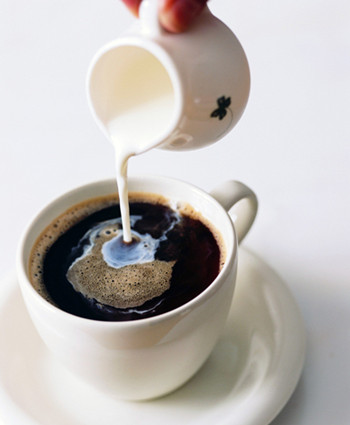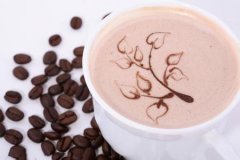The first wave and the second wave in the history of boutique coffee

Time has entered 2014, looking back on the past road, friends can still recall the coffee we came into contact with? From instant coffee when we were still in high school to all kinds of coffee chains and coffee and tea clubs after college, our understanding of coffee is also slowly changing with the passage of time.
Before talking about the third wave of boutique coffee, we need to know about his past-the first wave of coffee and the second wave of coffee.
According to Mr. Han Huaizong's book "Fine Coffee Science", the approximate time points of the three waves of coffee are:
The first wave (1940-1960): the key word at this stage is the instant melting of coffee.
The first wave of coffee originated from the second World War, which led to a large demand for coffee, especially the great contribution made by Americans at this time. At the end of World War II, Americans consumed an average of 9KG of coffee each year. However, the seemingly colorful coffee industry is based on quantity and no quality. At this time, Americans think that the function of coffee is to refresh the mind and help work, that's all. There is not too much pursuit of taste.
The second wave (1966-2000): coffee boutique.
The key words at this time are the popularity of coffee chains and Mr Alfred Peet's mysterious deep baking. As the first wave of coffee led by Americans fades away, several Europeans are slowly changing the taste of American coffee-the "godfather" Alfred Peet and "godmother" Erna Knutsen of boutique coffee. Mr. Peet promoted his deep-roasted coffee beans on the west coast of the United States, and eventually led to the Starbucks boom, allowing Americans to drink rich, fresh, high-quality coffee. Ms. Knutsen coined the term boutique coffee (Specialty Coffee), emphasizing the important influence of different environmental conditions of different producing areas on the taste of coffee and emphasizing "regional flavor". Under the promotion efforts of our predecessors, under Starbucks' packaging for the third space of coffee fashion, the second wave of coffee arrived and swept the world-coffee boutique, coffee shop expansion, espresso popular.
The third wave (2003 ~ present): coffee aestheticization
Today, you will find that more and more cafes have labelled hand-brewed coffee, boutique coffee, and freshly roasted coffee. After the millennium, cafes and training institutions such as Stumptown Coffe Roasters,Intelligentsia Coffee & Tea,Counter Culture,Blue Bottle have entered our world. Unlike other coffee chains, their common characteristics are:
1. Attach importance to the flavor of the region. The third wave of understanding of coffee is not only in the producing country, but also in the definition of coffee beans in producing areas, estates, dimensions, elevations, treatments, microclimates and varieties.
two。 Avoid heavy baking and bake shallowly. Shallow baking can better show the regional flavor of coffee bean producing areas.
3. Attach importance to the treatment of low pollution. Solarization, washing, honey treatment and wet ploughing are very popular.
4. Black coffee becomes mainstream when brewing: the third wave vigorously promotes the original black coffee without sugar and milk, using Japanese, European, American hand brewing or siphon equipment to make coffee.
5. The origin is sent directly to the baking plant. The third wave advocates direct trading, that is, roasters go directly to the origin to sign a price agreement with coffee farmers to improve the income of coffee farmers and improve the quality of coffee cultivation at the same time.
6. Scientific interpretation of coffee aesthetics. The third wave monitors coffee production with weighing, digital thermometers, Coffee Mojo and other quantifiable tools, and studies the upstream, middle and downstream of coffee as an aesthetics.
Important Notice :
前街咖啡 FrontStreet Coffee has moved to new addredd:
FrontStreet Coffee Address: 315,Donghua East Road,GuangZhou
Tel:020 38364473
- Prev

The crisis of the coffee bean industry the most valuable legal commodity on earth
Apart from oil, coffee is the most valuable legal commodity on earth. We will understand the impact of cheap coffee and popular marketing on coffee consumers and growers. Why did these coffee beans, which were originally as expensive as gold, end up with bad results? For more than a hundred years, the price of coffee has spiraled up and down in the rise and fall cycle. It has brought endless wealth to some people as well as to many people.
- Next

The legend of boutique coffee in Tarazu Raminita, a boutique coffee producing area.
Bill McCarpin runs La Minita Coffee Manor in Costa Rica, which has always been famous for serving high-quality coffee. In 1987, Bill McCarpin, who slept 36, rented a truck from a truck rental company. 200 bags of coffee beans were carefully selected from his coffee farm and shipped to Virginia, USA, thus unveiling Raminita's boutique coffee legend. Tarazhu is Godda.
Related
- Detailed explanation of Jadeite planting Land in Panamanian Jadeite Manor introduction to the grading system of Jadeite competitive bidding, Red bid, Green bid and Rose Summer
- Story of Coffee planting in Brenka region of Costa Rica Stonehenge Manor anaerobic heavy honey treatment of flavor mouth
- What's on the barrel of Blue Mountain Coffee beans?
- Can American coffee also pull flowers? How to use hot American style to pull out a good-looking pattern?
- Can you make a cold extract with coffee beans? What is the right proportion for cold-extracted coffee formula?
- Indonesian PWN Gold Mandrine Coffee Origin Features Flavor How to Chong? Mandolin coffee is American.
- A brief introduction to the flavor characteristics of Brazilian yellow bourbon coffee beans
- What is the effect of different water quality on the flavor of cold-extracted coffee? What kind of water is best for brewing coffee?
- Why do you think of Rose Summer whenever you mention Panamanian coffee?
- Introduction to the characteristics of authentic blue mountain coffee bean producing areas? What is the CIB Coffee Authority in Jamaica?

